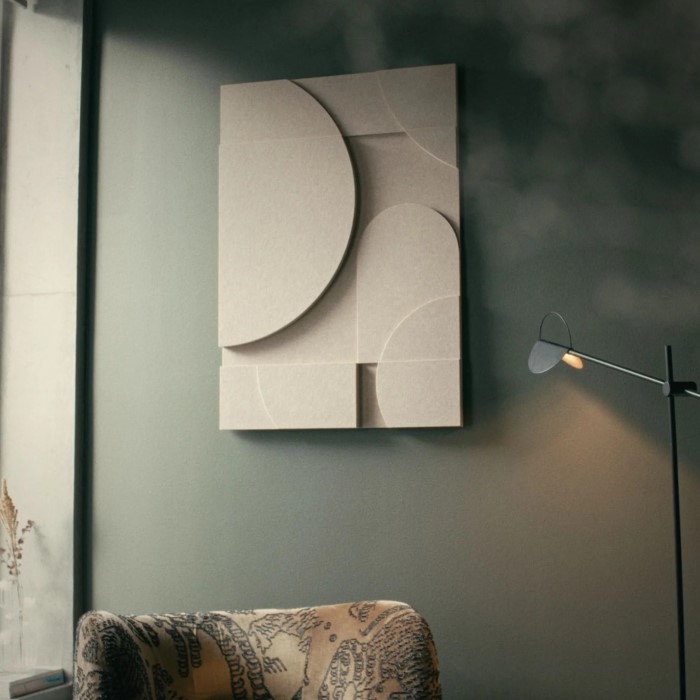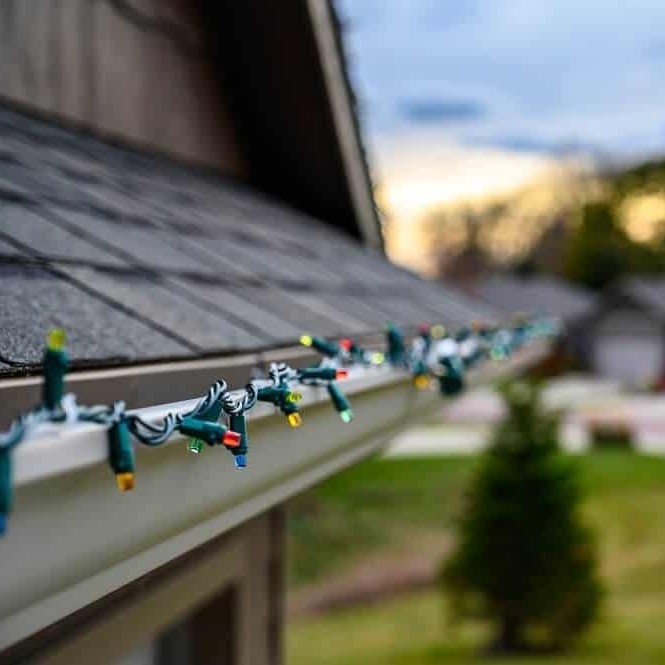Identifying Your Blinds Material
When cleaning wood blinds, it’s important to know what material they are. Wood blinds can be real wood or an imitation, like faux wood. This knowledge will guide you in choosing the right cleaning method. Here’s how you can tell the difference between the two.
Tips for Differentiating Between Real and Faux Wood
- Examine the Grain: Real wood blinds have a unique grain pattern, while faux wood usually has a more regular, consistent pattern.
- Feel the Weight: Faux wood blinds are often heavier than real wood because they’re made from denser materials.
- Inspect the Edges: The edges of real wood are often unpainted, showing the natural color. Faux wood edges are usually colored to match the rest of the blind.
- Tap on the Surface: Real wood gives off a different sound than faux wood when tapped.
Knowing which type you have is the best way to clean wood blinds safely. Faux wood is more resistant to moisture, while real wood requires a gentler touch to prevent damage. Use these tips to identify your blinds before you start cleaning.

Preparing to Clean Your Wood Blinds
Before you start, gather the right tools and prepare your space.
Essential Cleaning Supplies
Use the following items to clean your wood blinds efficiently:
- Soft Cloth: Use for gentle wiping.
- Vacuum with Brush Attachment: Helps remove dust.
- Mild Detergent or White Vinegar: Acts as a cleaning agent.
- Warm Water: Blends with detergent or vinegar.
- Microfiber Cloth: For drying and polishing.
- Soft Bristle Brush (Optional): For deeper cleaning.
Collect these supplies to ensure you’re ready to clean effectively.
Safety Measures Before Cleaning
Take these steps for safe cleaning:
- Move Furniture: Clear the area below blinds.
- Test Cleaners: Prevent damage to wood.
- Use Ladders Safely: Reach high windows with care.
- Keep Water Use Minimum: Avoid soaking the wood.
Follow these safety guidelines to protect yourself and your blinds.
Step-by-Step Cleaning Process
Cleaning wood blinds does not have to be a daunting task. With the right approach, you can ensure they look as good as new. Here is a simple, step-by-step guide to make the process easy and effective.
Dusting Off the Blinds
Begin your cleaning routine by dusting off the blinds. This will remove loose dust and dirt and make the deep cleaning process more efficient.
- Lower Blinds Fully: Lower the blinds completely to make sure every slat is accessible.
- Open Slats: Tilt the slats open to reach the entire surface.
- Use a Soft Cloth or Duster: Gently wipe each slat from top to bottom. A vacuum with a brush attachment can also be used carefully.
- Repeat on Each Side: Don’t forget to dust the other side of the slats.
Remember, regular dusting is the best way to keep your wood blinds clean for longer periods.
Applying Cleaning Solutions
Now that you have dusted off the blinds, it’s time to apply a gentle cleaning solution.
- Prepare Solution: Mix a mild detergent or white vinegar with warm water.
- Dampen Cloth, Not Soak: Wring your cloth to ensure it is damp and not dripping.
- Wipe Gently: Clean each slat individually, taking care not to scrub hard.
- Handle with Care: Use a soft bristle brush for edges and hard-to-reach areas if necessary.
By using mild cleaning solutions, you can avoid damage while effectively cleaning your wood blinds.

Drying and Polishing
The final step is crucial to prevent warping and maintain the blinds’ appearance.
- Dry Each Slat: Use a clean, dry microfiber cloth to wipe down each slat.
- Polish for Shine: Ensure no moisture remains that can damage the blinds’ finish.
- Check Metal Parts: Wipe down the headrail and other metal parts to prevent dust build-up.
Take care to dry quickly and thoroughly as you work through each slat. With these steps, your wood blinds should look clean and well-maintained.
Maintaining Your Wood Blinds
Keeping your wood blinds clean and in great shape requires regular maintenance.
Regular Dusting Tips
Start by dusting your blinds often. Dust them every few weeks or more if necessary. Use a soft cloth or a feather duster. Begin at the top, working your way down each slat. This simple step helps avoid buildup of dust and dirt, keeping your wood blinds looking newer for longer.
Preventive Care and Maintenance
To prevent major cleanups, handle your wood blinds with care. Avoid using harsh chemicals or soaking them in water. Instead, use a mild detergent or vinegar mixed with water for cleaning. Make sure to dry the blinds quickly after cleaning. Check the blinds regularly for any signs of damage or wear. If you spot any issues, address them promptly to avoid further damage. This way, you maintain the quality and prolong the lifespan of your wood blinds.
Deep Cleaning for Stubborn Grime
When your wood blinds have tough dirt, a deeper clean is needed. Follow these steps for effective results:
Handling Heavy Soiling and Grease
- Prepare a Stronger Solution: Mix mild detergent with warm water.
- Use a Soft Brush: Gently scrub the slats.
- Wipe Carefully: Clean off the dirt without scrubbing too hard.
- Dry Immediately: Prevent moisture damage by using a dry cloth.
For grease, be patient and repeat the gentle scrubbing as needed. Always be gentle to protect the wood.
Safe Use of Soaps and Detergents
- Choose Mild Soaps: Harsh chemicals can harm wood blinds.
- Test First: Apply a small amount to an inconspicuous area.
- Dilute Appropriately: Use more water than soap for safety.
- Rinse with a Damp Cloth: Avoid soap residue that can attract more dirt.
Remember to keep soap use to a minimum and always dry the blinds thoroughly after cleaning.
Trouble Shooting Common Issues
When tackling the cleaning of wood blinds, common issues may arise. Addressing these promptly ensures the longevity and aesthetics of your blinds.
Warped or Damaged Slats Repair
Blinds may warp or show damage over time. To fix this, replace the damaged slats immediately. This helps keep your blinds looking uniform and functioning well. If a few slats are bent, try laying them flat with a heavy object on top. However, if the wood is cracked, it’s best to get a replacement. Regular inspections can catch these issues early on, making repairs simpler.
Cleaning Without Causing Discoloration
Wood blinds can lose color if cleaned incorrectly. To clean without discoloring, always use mild soaps and avoid harsh chemicals. Test any cleaner on a small hidden part first. Use soft cloths to apply and always follow up with a dry towel. Sunlight can also fade wood, so keep blinds turned away from direct exposure when possible. If discoloration occurs, a wood stain matching the original color can help restore the look.

Alternatives to Traditional Cleaning Methods
Finding the best way to clean wood blinds does not always require conventional approaches. There are innovative tools and products that can offer convenient, efficient alternatives to traditional cleaning methods. Explore these options to make maintaining your wooden blinds even simpler.
Innovative Tools for Easier Cleaning
When it comes to cleaning wooden blinds, the market is full of tools designed to simplify the process:
- Blind Cleaning Brushes: These are specially designed to fit between slats, grabbing and removing dust.
- Microfiber Blind Dusters: These dusters attract and hold dust without the need for cleaning solutions.
- Blind Cleaning Gloves: Slip these on to clean both sides of slats at once as you run your hands over them.
- Vacuum Cleaner Attachments: Some come with blind cleaning extensions that make removing dust a breeze.
By using these tools, you can avoid the hassle of heavy wiping and reduce the need for wet cleaning, which is especially beneficial for real wood blinds.
Natural Cleaning Product Options
If you prefer eco-friendly cleaning solutions, consider natural options to keep your wooden blinds in pristine condition:
- Lemon Juice: Mix with water to create a natural, mild cleaning solution.
- Olive Oil: A little bit can be used to polish and protect the wood after cleaning.
- Baking Soda: Gentle on wood, it can clean without damaging the finish.
- Essential Oils: Some oils can effectively clean while leaving a pleasant scent.
These natural alternatives not only clean effectively but also minimize the risk of damaging delicate wood with harsh chemicals. Always remember to test any new product on a small, inconspicuous area before full application to ensure they do not harm the finish of your blinds.








